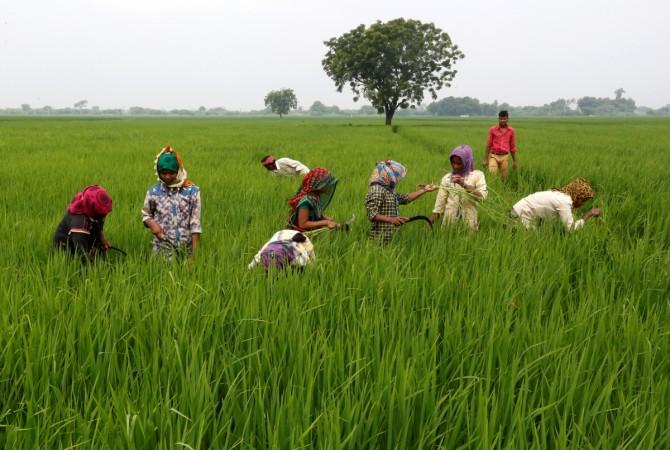
Farm loan waiver requests could be on the rise in the coming months, with Karnataka already shooting off a request to Prime Minister Narendra Modi to consider writing off 50 percent of Rs 42,329 crore agricultural loans given by commercial lenders and regional rural banks (RRBs), a day after Modi promised to waive off loans of sugarcane farmers in UP if voted to power.
The state's more volatile neighbour, Tamil Nadu, could follow suit, since both are reeling under severe drought. Kerala could also make similar demands, complicating matters for the Modi government. Overall, India ended the southwest monsoon season (June-September) with 3 percent deficient rainfall.
For Karnataka, 2016 was the third straight year of drought, with rainfall deficiency recorded in 136 of the 175 taluks in the state. Karnataka chief minister Siddaramaiah tweeted on Thursday a letter written by him to Modi a few days ago, asking him to consider waiving off half of the farm loans outstanding as of December 31, 2016.
In return, he said, he could consider reciprocating with a similar gesture for the remaining portion of the loan amount — Rs 10,552 crore — lent by cooperative banks.
Tamil Nadu, which recently pulled itself up from brinkmanship that saw leaders claiming that the spirit of the former chief minister J Jayalalithaa was guiding them in their decisions, is equally worse.
In January this year, the ex-chief minister, O Panneerselvam declared all 32 districts of the state as "drought-hit" and sought financial assistance from the Modi goverment. The rainfall deficit, according to him, was in the range of 35 to 81 percent in the state, further accentuated by the alleged non-cooperation of Karnataka in releasing Cauvery river water.
Kerala ended the monsoon season (June to September) with 33.7 percent shortfall, followed by 61 percent deficiency in the northeast monsoon between October and December, according to the Hindustan Times.
Bank loans to the agricultural sector stood at Rs 12.6 lakh crore as of September 30, 2016, according to reply given by a minister last November.
"The total agricultural loan outstanding as on September 30, 2016, stood at Rs 12,60,26,450.46 lakh," Parshottam Rupala, Minister of State for Agriculture, told the Rajya Sabha on November 18.
Of the total amount, the share of commercial banks was Rs 9.57 lakh crore, or 76 percent.
Last month, the government of India had estimated total foodgrain production for 2016-17 at 271.98 million tonnes, up 8 percent from 251.6 million tonnes last year, buoyed by normal monsoon in most parts of the country.
"As a result of very good rainfall during monsoon 2016 and various policy initiatives taken by the Government, the country has witnessed record foodgrain production in the current year. As per Second Advance Estimates for 2016-17, total foodgrain production in the country is estimated at 271.98 million tonnes...," the union agricultural ministry had said on February 15.
The estimates said that most of the crops — rice, wheat, maize, pulses, oilseeds — are bound to witness record production, with cotton and sugarcane being exceptions.
It now needs to be seen if the estimates go wrong, given the stress in the three southern states.
On Friday, the BSE Bankex (sectoral index) ended 0.26 percent lower as against the BSE Sensex that closed at 28,832, down 0.03 percent. SBI, Punjab National Bank and Bank of Baroda ended almost flat from their Thursday closing.

















